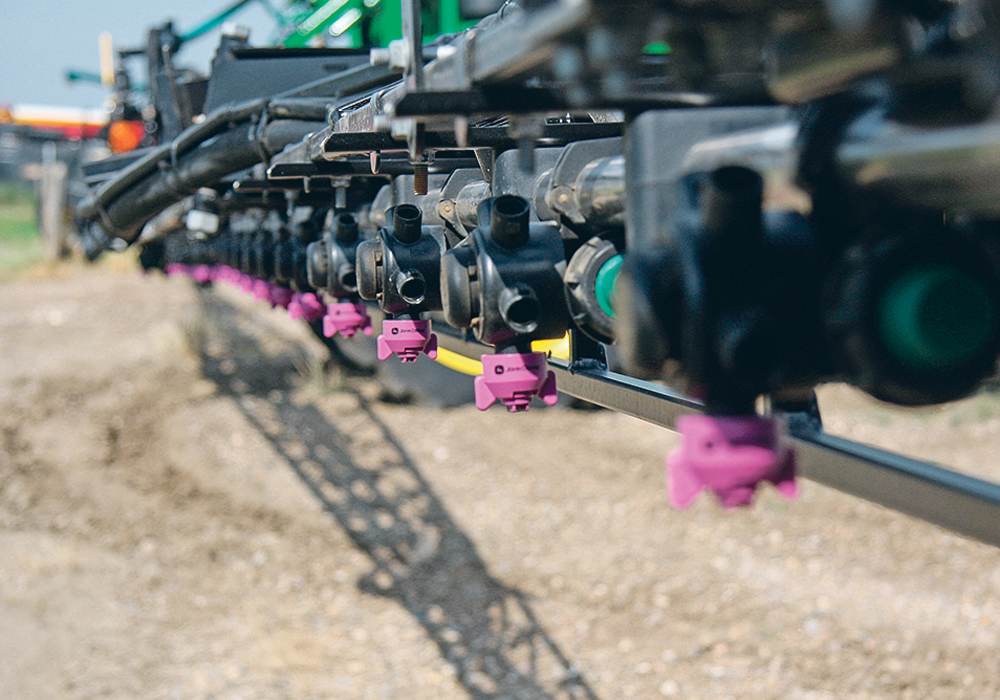Resistance is a growing problem but symptoms aren’t as obvious as a weed still standing following herbicide treatment
Potato growers are aware of the problem.
Pulse growers are aware of the problem.
Grain and oilseed growers? They could be aware, but many may not know that fungicide resistance is a real problem in Canadian agriculture.
“A lot of work has been done on herbicide resistance and that’s the one that everyone is the most familiar with,” said Holly Derksen, a plant pathologist and technical support specialist with Arysta LifeScience in Manitoba.
“Awareness of fungicide resistance is a lot less.”
Read Also

Agri-business and farms front and centre for Alberta’s Open Farm Days
Open Farm Days continues to enjoy success in its 14th year running, as Alberta farms and agri-businesses were showcased to increase awareness on how food gets to the dinner plate.
Potato growers know about fungicide resistance because potatoes are a high input crop and producers use sprays several times during a season to control disease.
When it comes to pulses, Group 11 fungicides (strobilurins) have become less effective on ascochyta, a familiar disease for chickpea growers in Saskatchewan. In wet years, growers might spray chickpeas three, four or more times to control disease.
“The population has developed over time and now there are very few populations of ascochyta that are sensitive to the strobilurin fungicides,” Derksen said.
Agronomist Kiall Jennett estimates that ascochyta in south-central Saskatchewan is now 20 to 50 percent resistant to Group 11 and Group 7 fungicides.
Jennett tells growers to tank mix a Group 3 fungicide with a Group 11 or Group 7 to slow the evolution of resistance.
“Once there is full resistance to Group 11, then we’re inevitably going to have resistance to Group 3 and 7,” Jennett said in an article published on manageresistancenow.ca, a website managed by CropLife Canada.
Disease resistance is common for strobilurins, but another one is metalaxyl — a fungicidal seed treatment used in “almost every single seed treatment,” Derksen said.
“Potato guys know about this — metalaxyl resistance.”
Grain and oilseed crops in Canada may also have issues with fungicide resistance, but the symptoms aren’t as obvious as a weed that’s still standing following a herbicide treatment.
“When you have resistant weeds, they’re very visible in the field,” Derksen said.
“But if it’s not a high-pressure year for disease … you’re not out there scouting for one lesion (on a plant).”
Diseases that affect canola and wheat may not be resistant to fungicides, but it’s likely that some fungicides are less effective on certain diseases.
“For things like the fusarium species and sclerotinia, there is a range of sensitivity to the main fungicide groups that we use,” Derksen said.
“Because they are (still) effective … growers aren’t as aware of this.”
The Manage Resistance Now website lists a number of best practices for dealing with fungicide resistance:
- Follow agronomic practices that promote healthy plants.
- Evaluate the need for disease control.
- Select fungicides strategically.
As an example of good agronomy, Jennett recommended wider row spacing when planting chickpeas. Twelve inches between rows is preferable to nine or 10 because it increases airflow and reduces the risk of a moist microclimate under the crop canopy, where diseases can flourish.
Deciding whether to use fungicides is also key for managing resistance. Growers should avoid using fungicides if the main benefit is peace of mind, Derksen said.
“By not spraying, is there going to be an economic loss, or will I just be able to sleep better (if I spray)?”
As a plant pathologist, Derksen knows plant diseases can be devastating, and fungicides are a key crop protection tool.
She doesn’t expect growers to make decisions based solely on fungicide resistance, but it should be a consideration.
“I just want it to be in the list of things that they’re thinking about.”
















